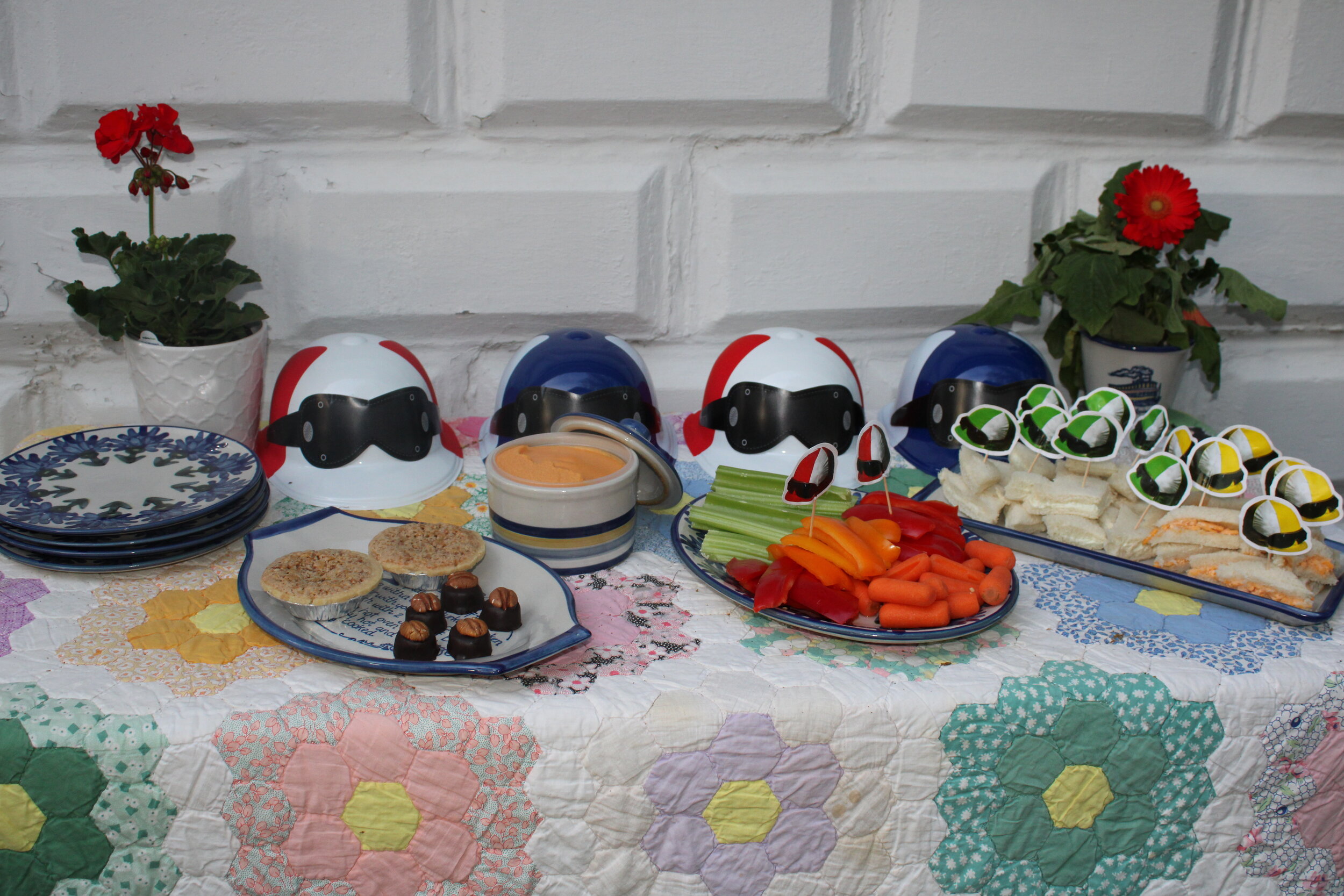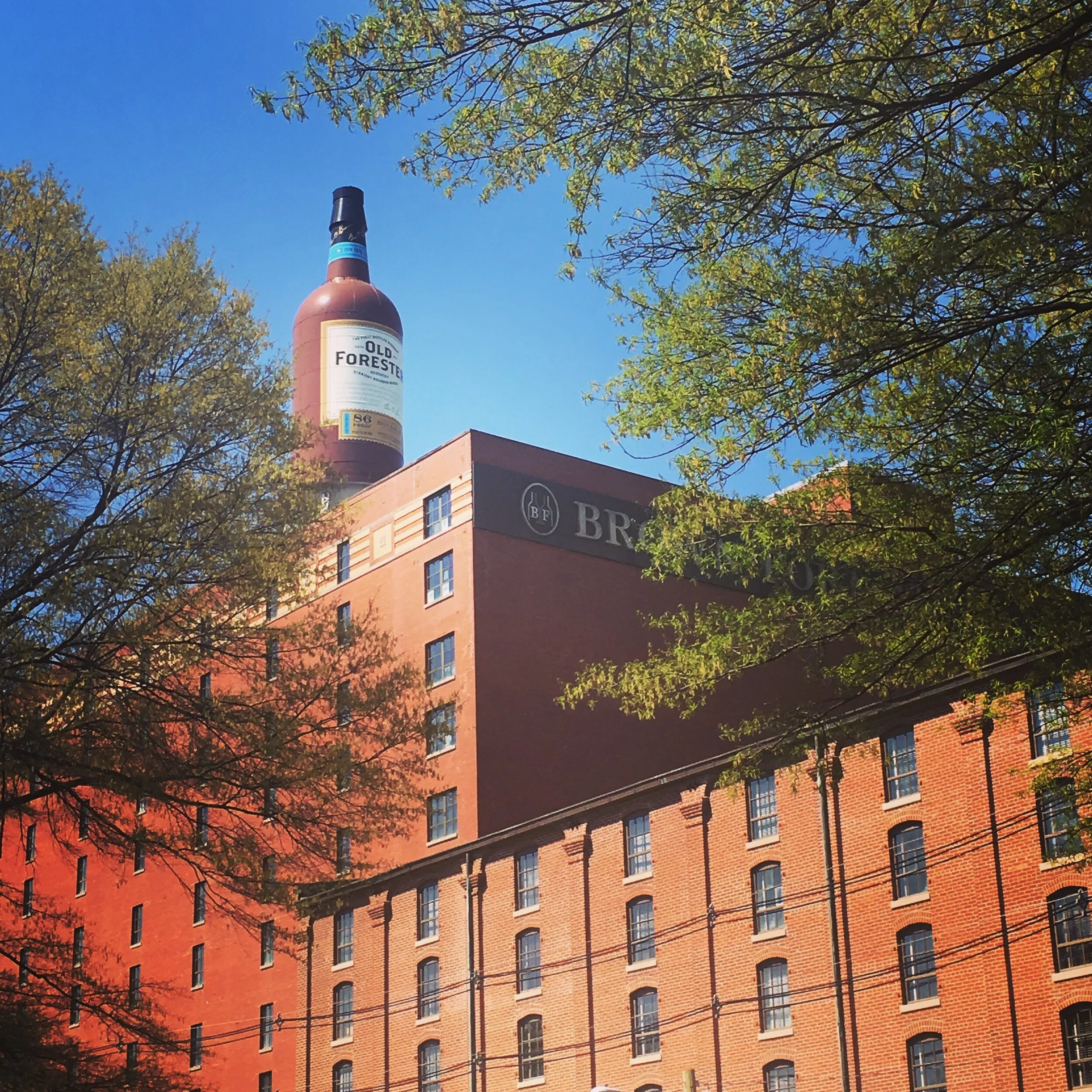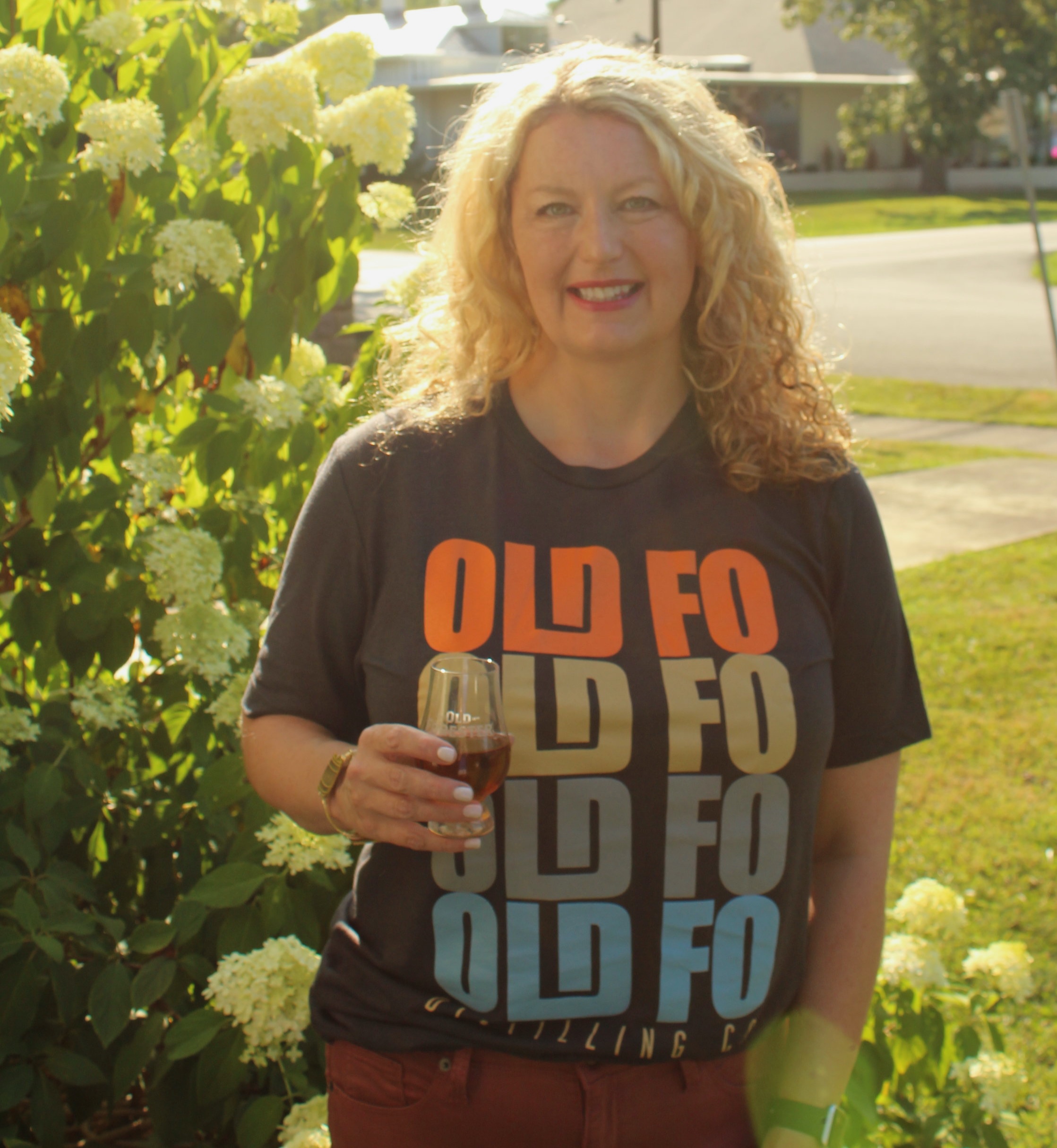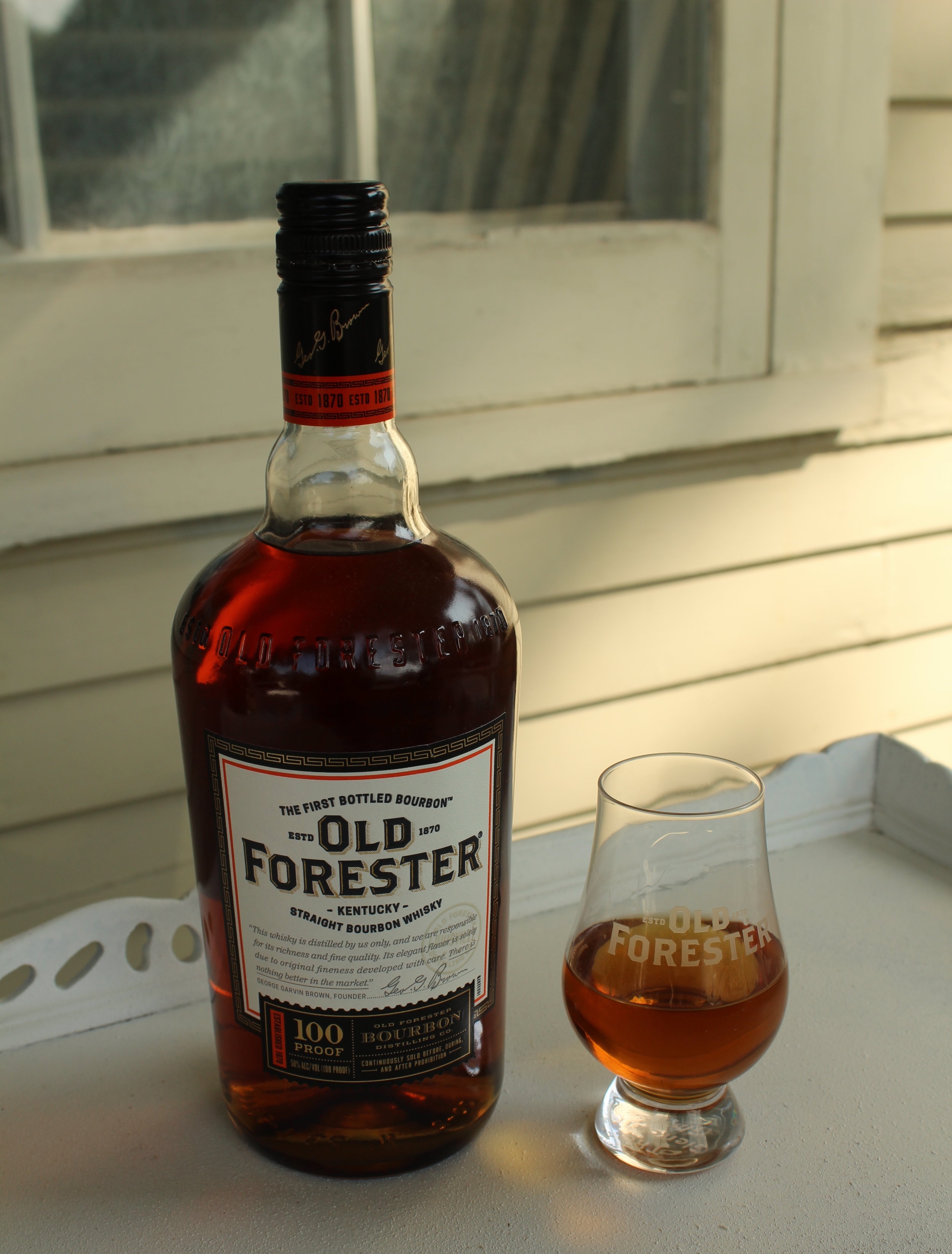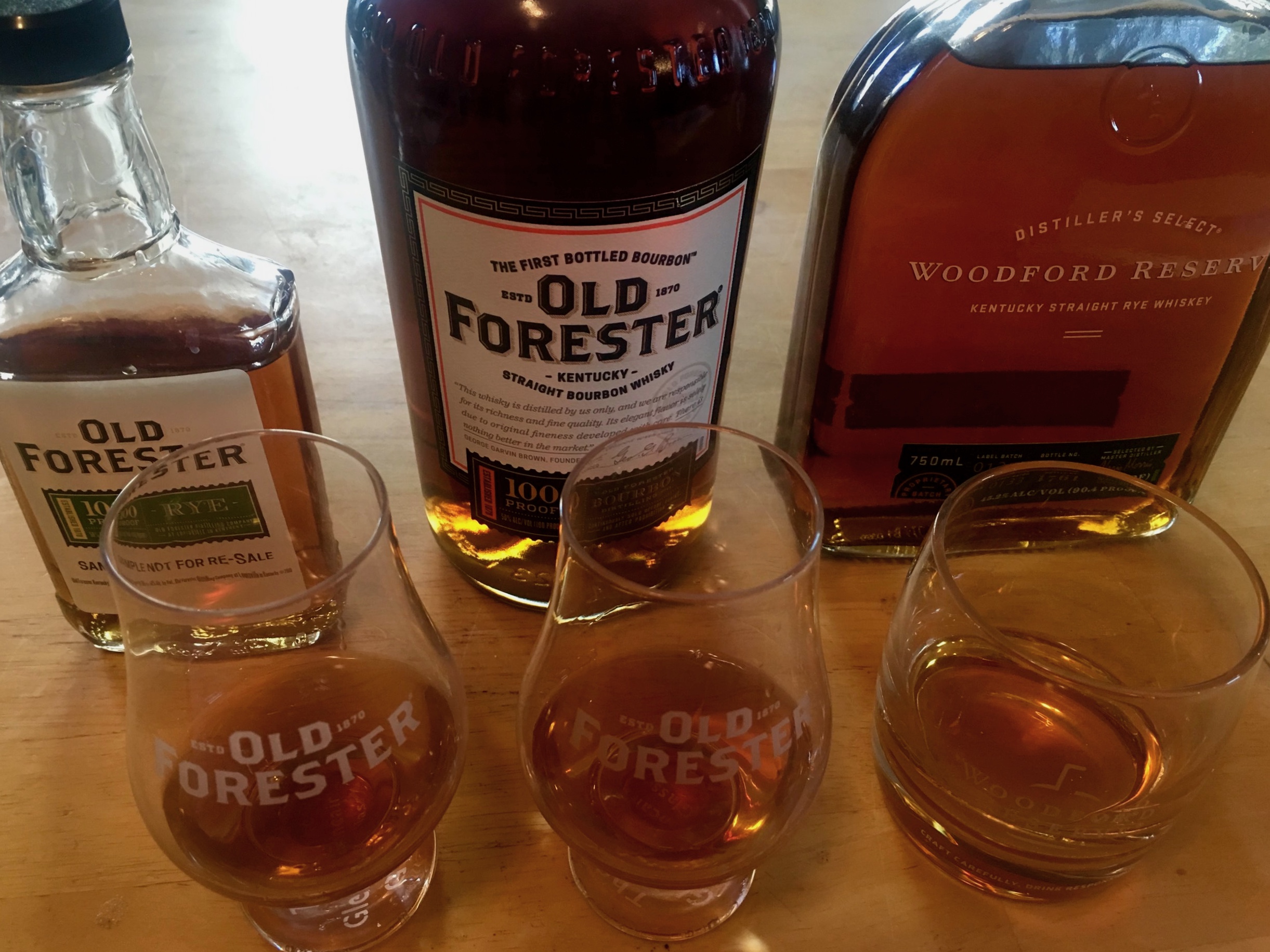Family-Friendly Kentucky Derby Party
Tips for a family-friendly Kentucky Derby gathering.
The other day, I had a FaceTime call with my 6 year-old niece. “Saturday is May 1st,” she said, “that means it’s also Derby Day!” She then invited me to her Kentucky Derby party, which she’s holding with her sister and my parents. I’m still strongly considering her invitation, even if it is three hours away.
This isn’t a Derby when I’m up for going to the track. I’m so glad the race is on for people who want to attend, but my Covid experience has left me both still wary of crowds and not fully able to wear a mask for long periods of time. I’m skipping the track this year, but a fun, family-friendly Kentucky Derby party sounds fabulous. I’ve put together some ideas for a fun outdoorsy party — I love that there’s nothing fancy or overwhelming about it, it’s full of Kentucky traditions, and it’s as much fun for a 6 year-old as it is for the rest of us!
I kept the decorations simple, using things that could withstand a spill or a drop. I love this inexpensive pin display banner for the bourbon/mint julep and Derby Festival pins I’ve acquired over the years. It tells a fun story of past events we’ve loved and adds a cute little vintage touch to a tree!
I used an old quilt as a tablecloth and grabbed a few kids’ jockey hats in the Derby Party section at Kroger to use as party favors. I also found a vintage Louisville Stoneware Derby-themed flower pot that was perfect for the occasion!
I kept the menu simple as well — mini Derby Pies from Kern’s Kitchen, pimiento cheese and Benedictine sandwiches, crudités with Hall’s Beer Cheese, and Woodford Reserve Bourbon Balls. All of these dishes are traditional Kentucky favorites, and all I had to do was assemble the sandwiches and cut up the vegetables. I used my Stoneware & Co Bachelor Button dishes to continue the theme of a traditional Kentucky event!
Of course, I had to have mint julep ingredients on hand — including bottles of Woodford Reserve and Old Forester for those who choose to imbibe and Ale-8-one for those who don’t. I love freezing some Ale-8 until it’s a slushy consistency then serving over crushed ice with a mint sprig for a julep mocktail that everyone can enjoy!
If you’re looking for recipes, or if you want to take a sure-to-be-appreciated hostess gift, Chef Ouita Michel’s new cookbook, Just a Few Miles South, is the absolute best! Ouita is one of my very favorite people, and her first-ever cookbook is filled with the Kentucky Comfort Food we all love at her restaurants! It would also be a great prize if your party does a Derby Horse Pool or other games!
Cheers to Derby, however you choose to celebrate this year!
Old Forester Old Fashioned
Today is National Cocktail Day, y’all. Now, I’m not usually one for these made-up internet holidays, and these days I’d rather sip my bourbon neat rather than mix up a cocktail. But, it was such a lovely afternoon to sit on the porch and enjoy an Old Fashioned.
The Old Fashioned claims its roots in the late 19th century, at Louisville’s famed Pendennis Club. I’ve heard it called Louisville’s official cocktail, and the official drink of Thurby. Whatever you call it, the sweet syrup, tart bitters, strong bourbon and hint of orange make for a lovely cocktail. You can sweeten it with a wheated bourbon or you can add a high-proof pour to even out the edges. It’s usually a great sipper, unless your bartender goes overboard with the bitters.
The best Old Fashioned I ever drank was during an interview and tasting experience. Jackie Zykan, the Master Taster at Old Forester, made the perfect OldFo Old Fashioned as we talked and tasted at the Brown-Forman Shively Warehouse. While this was kind of a once-in-a lifetime experience — trust me when I say that Jackie is one of the coolest, most knowledgeable, and all-around awesome people you’ll ever meet and I can only dream of being a badass like she is— we can all try her recipe at home.
The Perfect Old Fashioned Recipe, via Old Forester
INGREDIENTS
2 oz. Old Forester 100 Proof
0.5 oz. Demerara Syrup (2:1)
2 dashes Angostura™ Bitters
Combine ingredients in mixing glass. Stir with ice. Strain over ice in a double old fashioned glass. Garnish with lemon and orange peel.
Cheers, y’all!
Old Forester 150th Anniversary Bourbon
A special release celebrates the first bottled bourbon.
(I was provided with press samples of Old Forester 100 proof and Old Forester 150th Anniversary for review purposes. All opinions are my own.}
It’s no secret that I love Old Forester. I can’t even be objective about it. The 100 proof is one of my favorite everyday bourbons, and I think every home bar should have a bottle of OldFo Rye for cocktails. Now that I’ve fully acknowledged my fangirl status, let’s move on to a more impartial review.
Old Forester has a special place in the history of bourbon. In 1870, Louisville-based pharmaceutical salesman George Garvin Brown created a new, 90 proof whiskey , which he named “Old Forester” after a Dr. William Forrester. The new product batched bourbon from three nearby distilleries, Mattingly, Mellwood, and Atherton. Mr. Brown innovated the bourbon industry by sealing his whiskey exclusively in glass bottles and signs each bottle as his personal guarantee of its quality. Whiskey in individual bottle was pretty big news in 1870. Old Forester has been produced continually by the Brown-Forman Corporation for the past 150 years. (Brown-Forman was one of six distilleries that were allowed to legally distill alcohol for “medicinal purposes” during Prohibition.)
Brown-Forman Building, Dixie Highway, Louisville
This week, I had the fun opportunity to take part in a Zoom press conference with Old Forester President Campbell Brown and Master Taster Jackie Zykan in which they announced the latest OldFo release, which celebrates the 150th Anniversary of their iconic bourbon.
Old Forester 150th Anniversary Bourbon is a special release that was first planned seven-ish years ago when Brown-Forman Master Distiller Chris Morris set aside 150 barrels of Old Forester distillate in the Brown-Forman Shively rackhouse. The barrels were aged around seven years and underwent a heat cycling process that led to a maturation equivalent of about nine years. Several barrels were, of course, lost completely to the angels’ share, with the remainder being sampled and blended to produce three distinct batches. Jackie Zykan noted that three blends were chosen to honor the three original distilleries from which Old Forester was first blended. The 150th Anniversary Bourbon is bottled unfiltered at batch proof in an amber glass bottle, reminiscent of the original Old Forester packaging, with about 25,000 bottles in circulation. This release will retail for around $150.
Jackie noted that, while all of the releases are fantastic, Batch 1, which she describes as a “fruit bomb,” is her favorite. The press samples were mailed randomly, and I received Batch 2, which Jackie and Campbell refer to as “sweet and spry.”
Tasting Notes:
I tasted Old Forester 100 Proof against the 150th Anniversary, Batch 2 as a baseline.
Old Forester 100 Proof
Mash bill: 72% corn, 18% rye, 10% malt
Proof: 100
Nose: honey, floral, cherry, brown sugar. Opens up to a strong note of red fruits.
Palate: golden syrup, banana, toasted pecans, cinnamon, toasted oak.
Finish: green apple and caramel.
Old Forester 150th Anniversary Bourbon, Batch 2
This isn’t a bourbon for the occasional bourbon drinker. At 126.4 proof, it’s powerful and syrupy — a sipper for serious whiskey fans. It’s a delightfully rich and layered bourbon that exaggerates and amplifies some of the best notes for which Old Forester is known.
Mash Bill: 72% corn, 18% rye, 10% malt
Proof: 126.4
Nose: deep and woody notes of toasted oak, walnuts, honey, and banana bread, opening up to dark brown sugar.
Palate: maple syrup, French toast, dark cherry, orange, cocoa, date.
Finish: spicy and dry with notes of orange peel.
Cheers, y’all!
Old Forester 100 Proof
My go-to bourbon.
Sometimes, people, especially non-Kentuckians or bourbon newbies, often ask me what my go-to bourbon is. Of course, that’s never an easy question. Everyone in Kentucky knows that a whole lot of factors go into that answer. Is there someone in the room who works at a particular distillery? Then their employer is definitely your favorite. Other factors include where your tastebuds are at the moment, whether you’re sipping or mixing in a cocktail, etc., etc. But, even with all of those disclaimers out of the way, I find that my answer usually is Old Forester 100 Proof.
I straight-up love Forester 100 as a sipper. I’m a huge fan of the warm butterscotch aroma, the apple and spice palate, and the toffee and clove finish. I also love that it’s at an incredible price point, and that it makes a fantastic cocktail. I think that this one belongs on every home bourbon bar.
I’ve had the opportunity to get to know a few of the folks on the brand team at Old Fo, and I can tell y’all that they are incredible. Master Taster Jackie Zykan is the coolest lady ever, and the entire team has an incredible vision for the future of the label. If you love Kentucky history and good whiskey, you should definitely visit the Old Forester Distillery and learn all about the first bottled bourbon! (My t-shirt is available in the distillery gift shop!)
I’ve also had a few people ask about my bourbon barrel bracelets — I always wear these to whiskey-tasting events. These are by Bourbon & Boweties and are available exclusively at Sweet Mash Goods in Lawrenceburg. These are my very favorites, and are a subtle way to reflect my love of bourbon every day!
What’s your go-to bourbon?
How to Taste Bourbon Like a Pro
Step-by-step guide to tasting Kentucky bourbon
Kentucky bourbon is bigger than ever. Of course, 95% of the world’s bourbon is made here in the Commonwealth, as is 100% of the bourbon that’s worth talking about. It’s an $8.6 billion dollar industry that generates over 20,000 jobs for Kentuckians. Bourbon impacts every Kentuckian. But, no matter how hot the industry is, I’ve noticed that there are plenty of Kentuckians who are still a little scared to drink bourbon. It’s a question I get fairly often from blog readers and social media followers: How do I get started with tasting bourbon?
As a bourbon writer, I’ve had the incredible opportunity to attend tastings led by some of the most interesting names in bourbon. I’ve watched the legendary Fred Noe of Jim Beam demonstrate his “Kentucky Chew” technique, participated in an intensive sensory tasting session led by Elizabeth McCall and Chris Morris of Woodford Reserve, the masters of (click here for information on how you can attend Woodford Reserve Tasting Academy, which I promise you’ll want to attend!), and been among the very first media members to sample the most recent Angel’s Envy offerings. I’ve picked up a few tasting tips along the way, and I want to share them with y’all.
Setup:
Now, it’s great if you have the opportunity to go to a tasting led by a professional. If you’re in Louisville, there are great classes at Westport Whiskey and Wine. Lexington and Louisville both have fantastic classes at Total Wine and More. And, of course, there are tasting opportunities on all of the distillery tours. But, it’s also pretty cool to setup a tasting at home, so you can learn about your own palate as well as your friends’ and family’s.
Step 1: Select your Whiskey.
If you’re going to have a whiskey tasting, you’ll want to select a whiskey. Now, many Kentucky distilleries produce a bourbon and a rye. These are both types of whiskey, and can be produced using the same equipment. Absolutely NOTHING marks you as an amateur quicker than calling a rye whiskey a “bourbon.” If you take one thing away from this blog post, please remember that. The main difference is the grain content. Bourbon whiskey must have a recipe, known as a mash bill, of 51% corn or higher, while the mash bill of rye is at least 51% rye. I find that, when selecting whiskeys to taste, it’s good to pick a theme. I often go by distiller. When sampling the new Old Forester Rye, I tried it against the Old Forester Signature Bourbon, as well as the Woodford Reserve Rye, as these were all produced under the supervision of the same Master Distiller, Chris Morris, under the two major Brown-Forman labels. Another easy starting point would be to try Maker’s Mark with Maker’s 46 or Woodford Reserve with Woodford Reserve Double Oaked. These comparisons will show you how the very same bourbon develops a different taste when finished in different barrels. You can also choose a flight consisting of one from different categories — wheated, high-rye bourbon, rye, etc. — to really see the differentiations. There is a great guide to hosting a tasting on the Kentucky Distillers Association website, and all of the major brands have really good information on their websites to help you learn about what you’ll be tasting before you buy.
Step 2: Set it up.
There really is no tasting glass like the glencairn for tasting. The tulip-shaped glass helps you experience the aroma of the bourbon as it’s supposed to be. If you don’t want to invest in tasting glasses just yet, you can use rocks glasses. Set up each tasting station in the same order, pouring about an ounce of whiskey into each glass. We’re not here to take shots or get drunk. The idea is to have enough juice in each glass to get an idea of how it tastes. Set your samples out in ascending proof order, so that a higher proof won’t overwhelm the flavors of a lower-alcohol spirit.
Step 3: Accoutrements
Turns out, you actually do need a few more things on hand for a bourbon tasting than just bourbon and glasses. Who knew, right?!?! You’ll need some good quality, flavor-neutral water. Here in Louisville, the best thing is actually our award-winning tap water, but to paraphrase Ina Garten, bottled water is fine. The water serves both as a palate cleanser and, if needed, for a drop or two to dilute the spirits. Sometimes, after the initial taste of the whiskey, it’s nice to add a little water (no more than a drop or two) to cut the proof and really dig into the flavor.
You’ll also want some crackers, bread, or popcorn to serve as a palate cleanser while tasting. And, although we’re limiting the amount of alcohol that’s being consumed in the tasting, you’ll want to have some appetizers or snacks on hand to offset the intoxicating effect. It’s also interesting to try some different food samples with your whiskey tasting to coax different flavors out of the drink. The Woodford Reserve flavor wheel tasting calls for aged parmesan, toasted hazelnut, dried cranberry, an orange slice, dark chocolate, and sorghum. I often make some substitutions when playing around with food pairings: I like Kerrygold Dubliner cheese rather than parmesan, and often use fresh or dried cherries and toasted pecans — these are just my taste preferences, and serve a similar purpose in drawing different notes out of any whiskey, not just the Woodford expressions.
Tasting
So here’s the thing. You honestly already have the only tools you need for a bourbon tasting: your own taste buds and curiosity. The most important thing here is taking the time to really be in touch with the sensory experience. Don’t let yourself fall into the trap of liking what you’ve heard is good, what “the experts” like, or what the people around you say is good. You know what you enjoy. You know if you like Brussels sprouts or red meat or chocolate cake, right? Well, bourbon is no different. Different people have different palates and enjoy different spirits. At the heart of it, that’s how the bourbon industry came to be.
Step 1: Color
The first thing you’ll notice when approaching your bourbon samples for tasting will be the color. The color actually does play a huge role in the tasting experience. The shade of amber of a particular whiskey will often be determined by its proof, age, and degree of barrel char. The above photo is a great illustration of how color predicts the character of a bourbon. Two Coopers’ Craft expressions were made from the exact same mash bill. The original Coopers’ Craft is an 82.2 proof, aged in charred barrels, while the Coopers’ Craft Barrel Reserve is 100 proof and has been aged in a specially chiseled barrel. Both of these factors impact the color of the bourbon, and give you the first clues about how it will taste. Predictably, the sample on the right, the 100 proof, has a far bigger and more complex flavor.
Step 2: Aroma
Your sense of smell has a huge impact on any food or drink that you taste. To get a full sense of a bourbon’s flavor, you should take the time to give it a good sniff before you taste it. Now, to the beginner, the first notes you’ll smell in any bourbon whiskey will probably be vanilla and caramel. These are characteristics of all bourbon whiskeys; they are the result of aging the spirit in charred oak barrels. Sometimes these notes linger beyond your first whiff, and they’re still pretty wonderful. As you smell the spirit, you’ll probably pick up on some other notes, too. These are the result of the specific yeast strains, grain varietals, barrel chars, maturation techniques, and everything else that goes into making a specific whiskey. Pay attention to what you smell. There are no wrong answers. I find that most of the Brown-Forman brands have a really strong pear note. Maker’s Mark expressions smell like creme brûlée. Explore the aroma for yourself and note how smells you enjoy play into flavors you like. If a whiskey has a strong raisin note and you hate raisins, then you’re probably not going to enjoy that spirit. Also, it’s very interesting to see how different conditions — a hot or cold day, how you’re feeling, etc. — play into the aroma you experience for a whiskey. It’s very common to smell something different in the same whiskey on a different day, even for folks who have a highly trained and developed palate.
Step 3: Taste
We’ve spent a lot of time getting to this point, haven’t we. Especially since the goal was supposed to be tasting a whiskey. Well, here we are.
Take a sip. See how it tastes on different parts of your tongue. Really think about the flavors you’re pulling out of the whiskey. Pay attention to your initial, emotional responses. Maker’s Mark always tastes like Christmas to me, both because of its elegant caramel and vanilla notes, but also because of the sensory memory of my great-aunt’s bourbon balls, which she always made with Maker’s Mark. You may sense a nutty flavor or a fruity note; subsequent sips or dilution with water will probably help you figure out what kind of nut or fruit. . If you’re tasting with other folks, you may hear them talk about notes that you absolutely do not taste; this is absolutely normal. There are usually some big notes that everyone experiences, and then other flavors that are way more about the bourbon’s impact on the individual. Some of the most experienced Master Distillers and Master Tasters and bourbon pros I’ve ever met will tell you the same thing: There is no right or wrong way to taste, and everyone picks up on a little something different. Trust your palate and your experience more than reviews, price point, or prestige. I promise this will make you a happier bourbon drinker.
Step 4: Finish
Think about the flavor the whiskey leaves in your mouth after you swallow (or spit) it. Maybe there’s a cinnamon note, or citrus fruit. It’s the final impression of the whiskey, and it often is a little more complex than the first taste.
Step 5: Record it
So, this is totally optional, but I find that the best way to develop my taste in bourbon is to keep a tasting notebook. I use this one, which is popular among the bullet journal crowd. I find that keeping my notes organized helps me to really compare flavors and experiences. I can look back on what I tasted in a specific whiskey and see if I taste the same notes again. It’s a great way to help me recall what I’ve tasted and what flavors I’ve tasted. If you’re interested in taking up bourbon tasting as a semi-serious hobby, I recommend journaling it.
Cheers, y’all! Let me know in the comments if you’ve ever done a bourbon tasting at home or at a distillery!!
Old Forester Rye Whisky Review
An interesting and complex addition to the Old Forester whiskey portfolio.
{I was provided a press sample of Old Forester Rye in advance of release. All opinions are my own.}
I don’t know when I’ve so pumped about a whiskey release, y’all. When I heard about Old Forester’s new 100 proof Rye release, I was so, so excited. Old Forester Signature (100 Proof) is one of my all-time favorite bourbons, and I love what Master Distiller Chris Morris and Master Taster Jackie Zykan are doing to create new riffs on Brown-Forman’s flagship line.
I set up a tasting flight to sample the Rye, both for comparison and to take an opportunity to revisit two of my favorite Brown-Forman pours. Along with the Rye sample, I tasted Old Forester 100 and Woodford Reserve Rye. Both Rye expressions have a lower percentage of rye in their mash bill — 53% for the Woodford and 65% for the Forester — while many other brands use up to 90% rye in their rye whiskey. The Woodford Rye is one we reach for frequently at my house; Bob especially likes it to balance out the sweetness in Old-Fashioneds or Whiskey Sours.
Tasting Notes:
I started with the Old Forester Signature as a baseline. As I said earlier, I love this one as a sipper.
Proof: 100
Nose: initial notes of brown sugar and caramel, opening up to butterscotch and oak.
Taste: apple & baking spice
Finish: apple & clove
Y’all, I love this bourbon. It’s versatile in cocktails and wonderful as a sipper. It’s at a fabulous price point, and it plays such an important role in Louisville’s bourbon legacy. Everyone should have this on their bar.
I moved on to Woodford Reserve Rye to switch over from a bourbon mashbill to a rye. I know that opinions on this one are fairly divisive, but I’m a fan.
Proof: 90.4
Nose: initial notes of rye and black pepper; as it opens, there’s a fruity depth and a buttery warmth.
Taste: spice, rye, & sorghum
Finish: apple
Moving from the robust 100 proof of Forester bourbon to the Woodford Rye was certainly noticeable. The lower proof does allow the buttery depth of the whiskey to open up a little more. I love the way this whiskey inverts both bourbon and rye mash bills as a spicy riff on Woodford Reserve’s bourbon expression.
These two favorites set up some pretty stiff expectations for the Old Forester Rye. I was pretty happy to see that this big whiskey lived up to my big expectations.
Proof: 100
Nose: starts out spicy, reminiscent of those cinnamon red-hot candies, before opening up to a buttery depth and notes of banana bread
Taste: rye grain, pear
Finish: peppery with a hint of lemon
I tasted this new against two of my go-to whiskies, and it did not disappoint. It certainly brings that fruit note that is prevalent across the entire Brown-Forman portfolio. The higher proof and spicier rye note differentiates this from both its bourbon sibling and its Woodford cousin. At $23 for a 750 ml, you should definitely have this on hand for both sipping and mixing. I think it would make a really nuanced Manhattan.
Old Forester Rye certainly lived up to my expectations. It manages to be at once unique and familiar, complimenting the 150 year-old Old Forester line in a smart and thoughtful manner.
(Editorial note: I use the American “whiskey” with an e in everyday usage. Brown-Forman rocks the boat by labeling Old Forester products with the Scottish “whisky” moniker, while their Woodford Reserve line is “whiskey”.)
Old Forester Distillery
Louisville’s must-visit distillery tour
I’m frequently asked what I recommend on a short list of Louisville tourism destinations — where to go if you only have a day or two to spend in the Derby City. I also often hear folks wondering where to start their bourbon tourism education. The Old Forester Distillery is the perfect answer to both of those questions.
Old Forester was the first bourbon whiskey to be sold exclusively in sealed bottles, and it’s the oldest bourbon on the market. It was even produced during Prohibition for medicinal use. If you want a great primer on the history of Kentucky bourbon — sales, marketing, and production — you need to visit Old Forester.
At the turn of the 20th Century, the 100 block of Louisville’s Main Street was integral to Kentucky’s bourbon industry. Over the years, production and storage facilities moved to more spacious areas, with Whiskey Row revitalization efforts only arising over the past few years. Brown-Forman built the Old Forester Distillery on the site of the brand’s original headquarters, providing both a tourism facility and a working distillery on history Whiskey Row.
In addition to giving visitors an overview of how the bourbon is made, the Old Forester tour actually gives its guests a glimpse into the cooperage process. Brown-Forman, Old Forester’s parent company, is the only distilling company that makes its own barrels. This tradition is honored at OldFo, as you can actually watch barrels being constructed and charred as part of the tour.
Don’t miss the gift shop which offers the Whiskey Row series (the 1920 blend is fantastic!) and the Distillery-Exclusive President’s Choice single barrel blend!
The Old Forester Distillery is open for tours and shopping 7 days a week at 119 West Main Street in Louisville. The $16 tour includes a tasting for guests over 21. Click here for more tour details.





